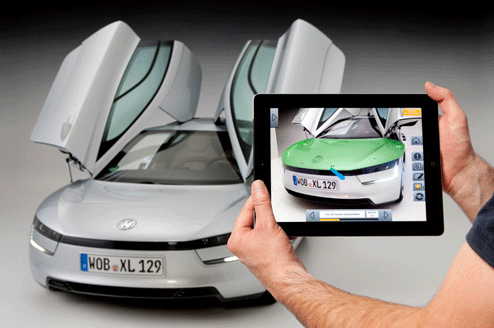I knew something was up when my wife suggested “going for a walk” at noon two Sundays ago. If you have ever been to Singapore you’ll know that with year-round temperatures of 33 deg C (92 deg F) and humidity of 80 percent, a midday amble does not usually make for the most pleasant experience. But as soon as we did get outside I could see we were not the only ones braving the midday sun. In fact, individuals or small groups of people intently looking down at their phones seemed to be everywhere. What on earth were they doing?
Hunting for Pokemons, of course. The Pokemon Go smartphone app developed by Nantic, a Google offshoot, has taken world by storm over the last month: 130 million downloads; $206 million in revenue; more daily users than Twitter; and more time spent in-app than for either Facebook or Snapchat. With Singapore’s over 100 percent smartphone penetration rate (some people have more than one), fast mobile broadband, and fairly ubiquitous Wi-Fi, it is not too surprising that Pokemon Go is a huge hit here.

But if the Pokemon craze has passed you by (thus far) then let me explain how it works. Briefly, it is a location based game that depends on the GPS capabilities of today’s smartphones. Aided by a map which shows nearby Pokemon characters, the aim is for you (represented on-screen by an avatar) to hunt down as many Pokemons as possible and “catch” them by striking them with a virtual ball. (If you wish to know more and all about PokeStops, Poke Balls, Lures, etc, then this
website will help.)
Now, of course, smartphone or any other kind of games would not normally be discussed on this blog or be of serious interest to an industrial audience. But what makes Pokemon Go different and brings it into relevance is the use of
augmented reality such that a Pokemon character appears on screen as a digital image but within the user’s actual environment as viewed by the smartphone’s camera.
Whereas the better known virtual reality (VR) completely immerses the user in a computer-generated environment, augmented reality (AR), as its name implies (augmenting the reality), maintains the existing physical reality but adds a digital element (the Pokemon, in this case) to create what it is a value-added mix of the real and the virtual. And it is AR’s applications and potential in industry that make it worth discussing in the context of the current Pokemon Go phenomenon, which has brought augmented reality to a mainstream audience for the very first time.
In fact, augmented reality has its roots in the industrial rather than the consumer world. Tony Caudell, a Boeing researcher, came up with the term back in 1990 to describe a system aiding operators installing cables and equipment in aircraft. The technology was essentially a niche interest for the next two decades and it’s only really in the last few years through general advances in computer technology, especially handhelds and wearables, that it’s begun to make a serious inroad back to industrial environments. Providing guidance and instructions to operators by contextually superimposing digital instructions over a real-world view of machines or other equipment is so far the primary industrial application of AR.
Although perhaps not purely industrial, Volkswagen’s MARTA (Mobile Augmented Reality Technical Assistance) system was released as a tablet app in 2013 for the XL1 for use by repair shop technicians. Opening the app and pointing the tablet at the car engine brings up digital labels for the individual parts and displays work instructions for all the necessary service tasks. As vehicles become increasingly complex, this type of enhanced support for servicing becomes more important.

Last year, DHL revealed the results of a successful pilot project at a Dutch warehouse involving the use of augmented reality for item order picking. For three weeks, 10 workers were equipped with smart glasses (including Google Glass and VuzixM100) that displayed necessary picking information such as aisle number, location, and product quantity. The faster picking enabled by the hands-free system led to an overall 25 percent increase in productivity compared to the warehouse’s usual pick method using RF scanning terminals.
At this year’s CES event in January, Intel touted the Daqri Smart Helmet, a hardhat developed by Los Angeles company
Daqri and which incorporates Intel’s M7 processor and RealSense 3D camera. Developed specifically for industrial environments, the Smart Helmet allows wearers to capture real-time information such as a pressure gauge reading, and can provide real-time overlay of wiring diagrams, schematics, thermal images and more via a 4D Heads Up Photonics Display System built into the helmet.
 Developed specifically for industrial environments, the Daqri Smart Helmet has sophisticated camera, sensing, and display capabilities.
Developed specifically for industrial environments, the Daqri Smart Helmet has sophisticated camera, sensing, and display capabilities. A few weeks later, PTC at its
Thing Event in Boston highlighted the acquisition of augmented reality company Vuforia, and my ARC colleague Dick Slansky, who was there, has a
blog post on this site describing Vuforia’s technology and why PTC is moving into the AR space. Other companies developing industrially oriented augmented reality technology and applications include
APX Labs,
iAR, and
Scope AR.
Back here in Singapore the Pokemon Go craze shows no signs of abating. In a report this week, the
Straits Times national newspaper described hundreds of people gathering in parks and housing estates to play the game and previously quiet areas becoming social hubs. While it is just a game, as the first experience of augmented reality for the vast majority of people here and elsewhere, the new-found familiarity means AR technology is suddenly no longer so esoteric and this can only help it find readier acceptance and encourage more widespread use in industry.



 Developed specifically for industrial environments, the Daqri Smart Helmet has sophisticated camera, sensing, and display capabilities.
Developed specifically for industrial environments, the Daqri Smart Helmet has sophisticated camera, sensing, and display capabilities. 
